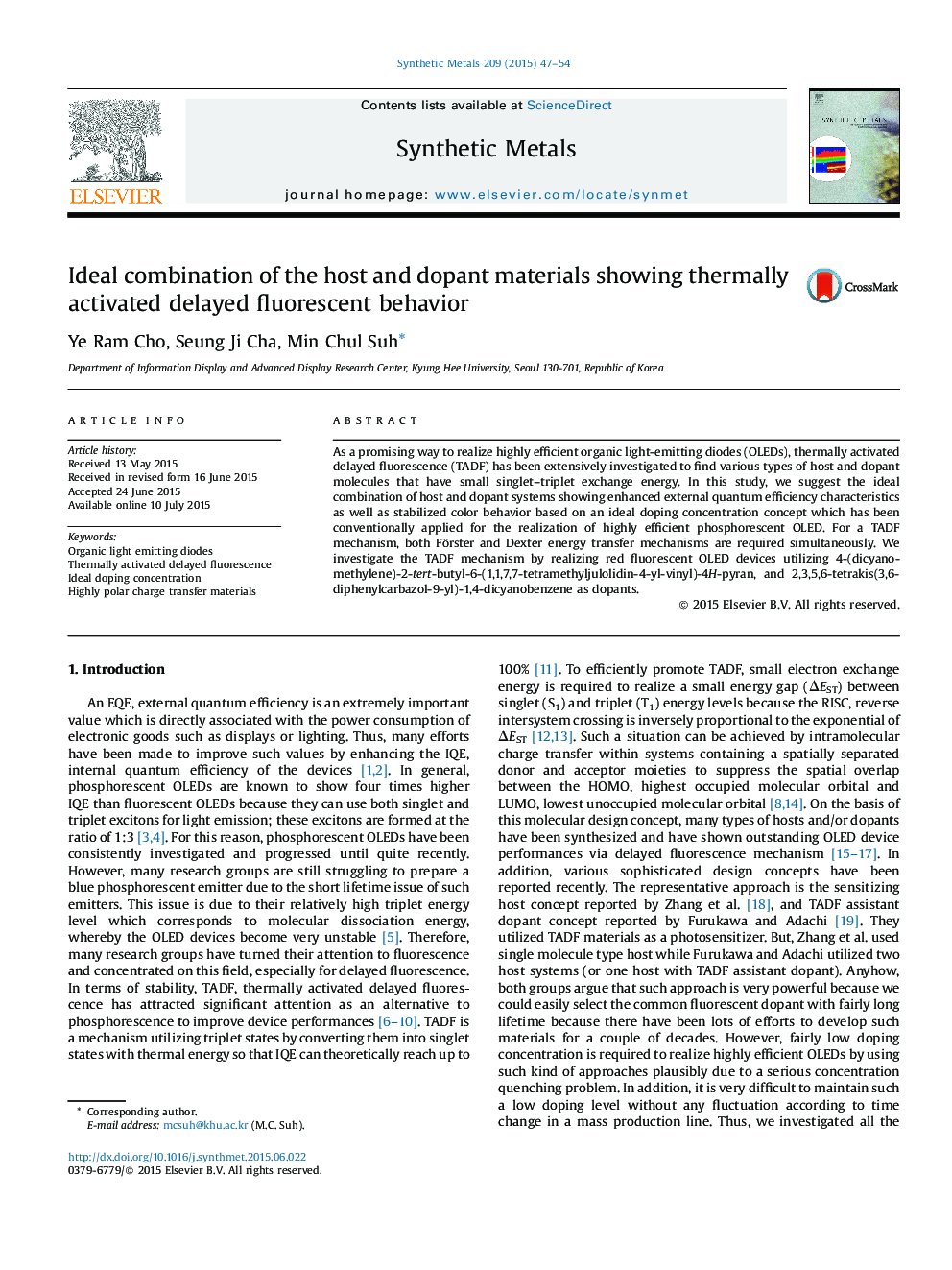| Article ID | Journal | Published Year | Pages | File Type |
|---|---|---|---|---|
| 1440471 | Synthetic Metals | 2015 | 8 Pages |
•Red fluorescent OLED devices showing TADF behavior.•Direct injection of charge carriers into the host materials.•Ideal doping concentration approach.•Low doping concentration.•Improved roll-off behavior from the low doping concentration condition.
As a promising way to realize highly efficient organic light-emitting diodes (OLEDs), thermally activated delayed fluorescence (TADF) has been extensively investigated to find various types of host and dopant molecules that have small singlet–triplet exchange energy. In this study, we suggest the ideal combination of host and dopant systems showing enhanced external quantum efficiency characteristics as well as stabilized color behavior based on an ideal doping concentration concept which has been conventionally applied for the realization of highly efficient phosphorescent OLED. For a TADF mechanism, both Förster and Dexter energy transfer mechanisms are required simultaneously. We investigate the TADF mechanism by realizing red fluorescent OLED devices utilizing 4-(dicyanomethylene)-2-tert-butyl-6-(1,1,7,7-tetramethyljulolidin-4-yl-vinyl)-4H-pyran, and 2,3,5,6-tetrakis(3,6-diphenylcarbazol-9-yl)-1,4-dicyanobenzene as dopants.
Graphical abstractFigure optionsDownload full-size imageDownload as PowerPoint slide
